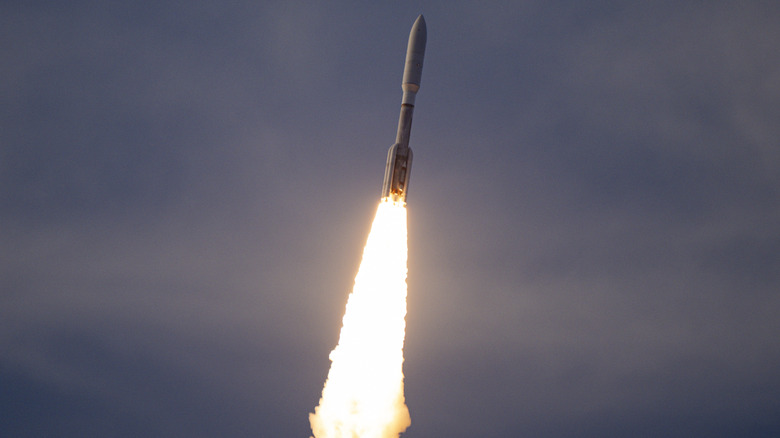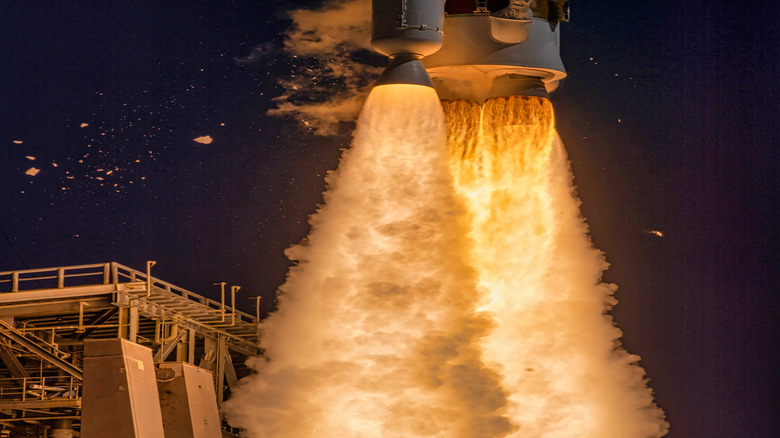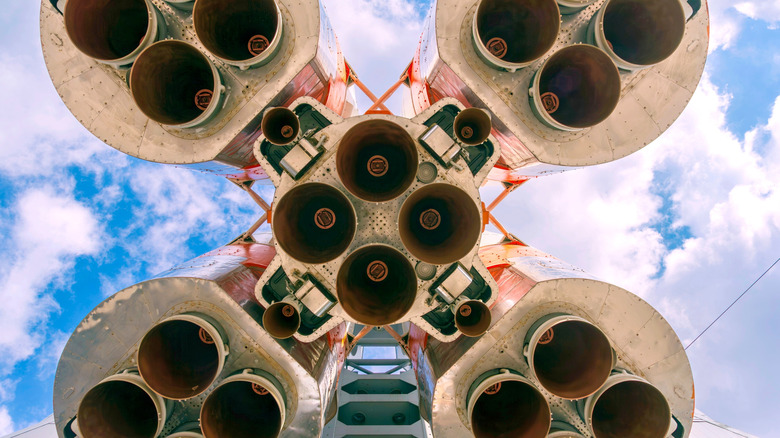How Does A Rocket Steer?
When was the last time you thought about how a rocket moves through space? The average person is likely to know the basics of how planes direct themselves through the atmosphere, but rockets? Comparatively few people have flown in or worked directly with them, and despite their importance to modern human civilization, how they actually steer remains a curiosity to many.
While they may look like giant arrows slicing through the sky, steering a rocket is a lot more complicated than simply pointing and firing. On Earth, vehicles steer by pushing against the ground or through the air, cars with wheels, boats with rudders, and planes with ailerons. But in space, there's no atmosphere to push against and no ground to grip. That means a rocket has to steer itself by controlling the direction of its own thrust. From the moment a rocket launches, it must make constant, precise adjustments to stay on the right path. The challenge goes beyond simply reaching orbit to maintaining a specific trajectory that accounts for Earth's rotation, gravity, and the mission's destination. Steering a rocket is the most critical aspect of any space mission's success, and steering failures can lead to catastrophic explosions.
To achieve successful steering, rockets rely on several clever systems that allow them to maneuver without the help of air or terrain. The most common methods include gimballed engines, as found in Lockheed-Martin's famed Titan and SpaceX's Falcon rocket series. A gimbal system allows a rocket's engine (or engines) to pivot, altering the direction of a rocket's thrust relative to the body of the vehicle. When the thrust these engines provide misaligns with the vehicle's center of mass, torque is generated, enabling rotation. Other steering systems involve auxiliary engines like small thrusters found on the rocket's sides.
The science behind rocket steering
Gimballed thrust is the backbone of modern rocket steering. In a gimballed system, the engine nozzle is mounted on a pivot that allows it to swivel in different directions. When the nozzle tilts away from the rocket's central axis, it redirects the thrust vector (the angle at which the thrust is expelled from the engine). The resulting torque rotates the rocket in the desired direction. Too much torque, however, and the misalignment can send the rocket spiraling out of control.
In December 2024, SpaceX posted a video on X showing off the rotational capabilities of the company's Super Heavy rocket engines. The thrusters' movements were choreographed to precisely match the videos heavy-metal soundtrack in a display that exemplifies just how exact a rocket's engine must be to achieve successful steering while avoiding disaster. For finer movements, especially in the later stages of a rocket's journey where large course corrections are no longer needed, rockets rely on reaction control systems (RCS). NASA's Apollo spacecraft famously used a RCS to perform docking maneuvers and orbital adjustments.
Historically, rockets also incorporated vernier thrusters, which are small, dedicated engines mounted on the sides of a rocket that provided finer adjustments during a rocket's boosting phase. This was the technology used in the successful launch of the Atlas 12A rocket in 1957, the United States' first intercontinental ballistic missile. Not unlike how plants grow in space, figuring out how to safely steer rockets through the atmosphere and beyond is a slow, incremental process that continues to be improved upon.
From launch to orbit and beyond
During the initial stages of a launch, rockets produce an incredible amount of power in the form of thrust in what is essentially a highly controlled explosion. This is due to the tremendous force produced by Earth's gravity. To reach escape velocity, the lowest speed needed to leave orbit, rockets need to reach an astounding speed of 25,000 miles per hour. The fuel involved in a rocket launch is a combination of methane or hydrogen mixed with an oxidizer that allows it to ignite and burn, typically liquid oxygen. All of the resulting force gets shunted out of the nozzle of the engine at more than 5 times the speed of sound.
But not all rockets are bound to leave our planet's orbit, which means those craft require less fuel than their interplanetary companions. Giving a rocket sideways momentum allows it to utilize our planet's gravity, continuously "falling" back to Earth in a way that means it never fully comes back down. Instead, the rocket slings around the planet at ridiculous speeds. The satellites crucial to so much of our modern technology and the International Space Station rely on the same principle (check out our guide to the things astronauts are banned from doing on the ISS to learn more about life in space). In fact, the ISS is traveling at around 17,900 mph (or roughly 5 miles per second).
If you want to explore the physics of making a rocket fly on your own (without having to become an astronaut or an aerospace engineer), here's how to make a great bottle rocket designed for distance. And the next time you see a rocket launch being streamed live, you'll have all the knowledge you need to impress whoever's watching with you.


